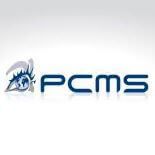Description

Retail Garment Store

PCMS Retail

TRIMS
Comprehensive Overview: Retail Garment Store vs PCMS Retail vs TRIMS
Retail Garment Store, PCMS Retail, and TRIMS each serve the retail industry with solutions tailored to different aspects of store management and operations. Here’s an overview of their primary functions, target markets, market positions, and key differentiators:
a) Primary Functions and Target Markets
-
Retail Garment Store:
- Primary Functions: Retail Garment Store software typically manages inventory, point of sale (POS) operations, customer relationship management (CRM), and supply chain operations. It also often includes features for sales tracking, reporting, and employee management.
- Target Markets: Primarily targets small to medium-sized independent retail garment stores and boutiques that require comprehensive yet straightforward tools to handle their retail operations without extensive IT infrastructure.
-
PCMS Retail:
- Primary Functions: PCMS Retail offers a suite of services focused on omni-channel retail solutions including POS systems, inventory management, customer engagement, and data analytics. It emphasizes seamless integration across channels, mobile POS, and real-time data integration.
- Target Markets: The primary target market is large retailers and enterprises that operate across multiple channels, such as department stores, specialty chains, and global retailers seeking robust solutions.
-
TRIMS:
- Primary Functions: TRIMS specializes in complete retail management systems encompassing inventory management, POS, warehousing, customer loyalty programs, and e-commerce integration. It offers extensive reporting and analytics capabilities.
- Target Markets: Targets mid to large-sized fashion and apparel retail chains that need a comprehensive system to manage complex operations, both online and offline.
b) Market Share and User Base
- Retail Garment Store: Generally, these solutions have a smaller market share compared to major retail management suites as they mainly serve niche markets and independent retailers. The user base is typically local or regional with a focus on single-store operations or small chains.
- PCMS Retail: Holds a significant market share within the omni-channel and large retailer space due to its ability to serve large enterprises with complex needs. The user base is expansive, including several prominent global retail brands.
- TRIMS: Its market share is moderately large within fashion and apparel-focused retail solutions. The user base encompasses mid-sized and larger fashion retailers, giving it a strong presence in that niche.
c) Key Differentiating Factors
-
Retail Garment Store:
- Ease of Use: Simplicity and intuitive interfaces make it ideal for smaller retailers who might not have extensive IT resources.
- Cost-Effectiveness: Generally offers solutions at a lower cost, making it attractive to smaller businesses.
- Customization: Often more flexible for customization at a small scale allowing independent stores to tailor the system to their specific needs.
-
PCMS Retail:
- Omni-Channel Capability: Robust solutions designed to integrate customer experiences across physical, online, and mobile platforms seamlessly.
- Scalability: Capable of managing operations for large-scale retailers and supporting growth across various markets and geographies.
- Enterprise-Level Support: Provides extensive support and integration capabilities for complex enterprise systems.
-
TRIMS:
- Industry Focus: Strong emphasis on fashion and apparel makes it highly specialized for this sector's unique challenges.
- Comprehensive Suite: Offers a complete package that includes e-commerce and loyalty components, essential for modern retail environments.
- Advanced Analytics: Comprehensive reporting tools designed to aid decision-making in fast-changing retail markets.
These solutions each serve distinct segments and needs within the retail industry, shaping their respective developments and market strategies. As the retail landscape continues to evolve with technology, these solutions will need to adapt and innovate to maintain or grow their market presence.
Contact Info

Year founded :
Not Available
Not Available
Not Available
Not Available
Not Available

Year founded :
Not Available
Not Available
Not Available
Not Available
Not Available

Year founded :
2019
Not Available
Not Available
India
Not Available
Feature Similarity Breakdown: Retail Garment Store, PCMS Retail, TRIMS
When comparing retail management systems like Retail Garment Store, PCMS Retail, and TRIMS, it's essential to explore their core features, user interfaces, and any unique characteristics that distinguish these products. While specific details can vary based on software versions, customer configurations, and updates, here's a general breakdown:
a) Core Features in Common
-
Inventory Management:
- All three systems offer comprehensive inventory management features, including stock tracking, reorder management, and inventory reporting.
-
Point of Sale (POS):
- They support POS functionalities crucial for processing sales transactions, handling returns, and managing customer payments both in-store and online.
-
Reporting and Analytics:
- Each platform provides reporting tools that allow retailers to monitor sales performance, inventory levels, and customer behavior, aiding in data-driven decision-making.
-
Customer Relationship Management (CRM):
- Basic CRM features include customer profile management, purchase history tracking, and loyalty program management.
-
Order Management:
- These systems facilitate order processing, including order creation, tracking, fulfillment, and delivery management.
-
Product Management:
- Capabilities for managing product details, categorization, pricing, and promotions are standard across these platforms.
b) User Interface Comparison
-
Retail Garment Store:
- Typically features a straightforward, user-friendly interface focused on ease of use for small to mid-sized retailers. It emphasizes intuitive navigation and minimalistic design.
-
PCMS Retail:
- Known for its versatile and scalable user interface. It provides customizable dashboards and modules, catering to both small businesses and large enterprises. Its interface is often designed to integrate seamlessly across various retail formats.
-
TRIMS:
- This system usually offers a robust and feature-rich interface, equipped with a visually organized layout. It emphasizes workflow efficiency and might be more complex, catering to diverse retail operations.
c) Unique Features
-
Retail Garment Store:
- May offer specialized features tailored for garment and apparel retailers, such as style-color-size matrices, seasonal catalog management, and fabric tracking.
-
PCMS Retail:
- This system could stand out with its omni-channel capabilities, offering seamless integration across physical and online stores. It often provides strong support for complex retail operations through scalable architecture.
-
TRIMS:
- Known for its dynamic allocation and replenishment features, TRIMS can optimize stock levels across multiple locations. It might also provide advanced merchandising capabilities to manage large portfolios.
These comparisons serve as a general guide. For an accurate assessment, including potential updates or specific customizations, it is advisable to evaluate each solution based on recent demos, user reviews, and interactions with their respective sales teams.
Features

Not Available

Not Available

Not Available
Best Fit Use Cases: Retail Garment Store, PCMS Retail, TRIMS
When evaluating software solutions like Retail Garment Store, PCMS Retail, and TRIMS, it's essential to consider the specific needs of your business and how each product aligns with those needs. Below is a detailed analysis of the best fit use cases for each:
a) Retail Garment Store
Best Choice For:
- Small to Medium-sized Apparel Retailers: Retail Garment Store is ideal for standalone boutiques or smaller chains focusing on lifecycle aspects such as inventory management, sales, and customer engagement specific to apparel.
- Stores Requiring Basic Point-of-Sale Operations: Businesses that need a straightforward system to handle daily transactions efficiently.
- Fashion Retail Startups: New entrants in the garment retail space looking for an easy-to-implement solution to manage their inventory and sales without the complexity of larger systems.
b) PCMS Retail
Preferred Option For:
- Large Retail Chains: PCMS Retail is suitable for businesses that require a robust, scalable solution capable of handling significant transaction volumes across numerous locations.
- Omnichannel Retailers: Companies seeking to integrate online and offline sales channels seamlessly, providing a unified shopping experience for customers.
- Retailers Needing Advanced Customization: Businesses that need highly customizable software to support specific operational processes or customer engagement strategies.
- International Retail Operations: Organizations with a global footprint requiring multi-currency, multi-language, and localized compliance capabilities.
c) TRIMS
Consider When:
- Fashion-specific Needs: TRIMS is tailor-made for fashion retailers, with features dedicated to managing collections, seasonal changes, and supplier collaboration.
- Mid to Large-sized Enterprises: Companies that need comprehensive solutions covering everything from point of sale to back-office operations such as inventory and order management.
- Businesses Requiring Comprehensive Reporting and Analytics: TRIMS provides in-depth insights and analytical tools that help fashion retailers make data-driven decisions.
- Retailers with Complex Supply Chains: Businesses that need to manage complex supply chain logistics including procurement, manufacturing, and distribution.
d) Industry Verticals and Company Sizes
- Retail Garment Store: Primarily caters to small to medium-sized apparel retailers, offering industry-specific features that are simple to implement and use. It's beneficial for companies focusing solely on garment/apparel retail without needing extensive system customizations.
- PCMS Retail: Targets a broader range of retail industry verticals, including fashion, department stores, and specialty retail. Its scalability makes it suitable for large enterprises and multinational brands that demand extensive customization and integration across various channels and regions.
- TRIMS: Focused primarily on the fashion industry, supporting mid to large-sized fashion retailers. Its specialized features cater to businesses needing tailored solutions for managing fashion-specific operations and higher-level analytics.
Each of these software solutions caters to different needs within the retail garment industry, from small local boutiques to large international retail chains, and their best fit use cases are dependent on the size, scale, and specific operational requirements of the business.
Pricing

Pricing Not Available

Pricing Not Available

Pricing Not Available
Metrics History
Metrics History
Comparing undefined across companies
Conclusion & Final Verdict: Retail Garment Store vs PCMS Retail vs TRIMS
To determine which product offers the best overall value between Retail Garment Store, PCMS Retail, and TRIMS, it's crucial to evaluate each product based on its features, pricing, usability, scalability, customer support, and industry-specific needs. Here’s a structured conclusion and final verdict:
Conclusion:
a) Best Overall Value: Considering the factors mentioned, PCMS Retail often tends to offer the best overall value for retailers seeking a comprehensive and scalable solution. This platform is known for its robust functionality that caters to a wide range of retail operations, including inventory management, point of sale, and customer relationship management.
b) Pros and Cons:
-
Retail Garment Store:
- Pros:
- Tailored specifically for garment retailers, offering features like style, color, size matrices, and seasonal demands.
- Often more affordable and simpler to implement for small to medium-sized businesses.
- Cons:
- Limited scalability and flexibility compared to more robust systems.
- Potential lack of advanced features that larger operations might need.
- Pros:
-
PCMS Retail:
- Pros:
- Highly scalable and customizable, suitable for large and diversified retail operations.
- Strong integration capabilities with various external systems.
- Comprehensive support for multi-channel retailing.
- Cons:
- Can be complex and costly to implement and maintain.
- Steeper learning curve for users unfamiliar with advanced retail systems.
- Pros:
-
TRIMS:
- Pros:
- Offers strong merchandising and stock management features.
- Good for retailers looking for a balance between functionality and cost.
- Focused user interface that simplifies retail operations.
- Cons:
- May not have the breadth of features needed for very large and diverse retail operations.
- Limited third-party integrations compared to PCMS Retail.
- Pros:
c) Recommendations:
-
Small to Medium-Sized Garment Retailers:
- Consider starting with Retail Garment Store for its affordability and specific garment-focused features. As the business grows, evaluate if TRIMS or PCMS is needed for additional features.
-
Larger Retail Operations:
- PCMS Retail is likely the best fit due to its scalability and comprehensive suite of features, which support complex retail environments.
-
Retailers Focused on Cost-Effectiveness with Adequate Features:
- TRIMS could be an ideal middle-ground solution, offering a good mix of cost and useful functionality without the complexity of PCMS Retail.
In essence, the decision should be guided by the scale of operations, specific business needs, and budget constraints. Retailers should prioritize understanding their business requirements and future growth plans when choosing between these solutions.